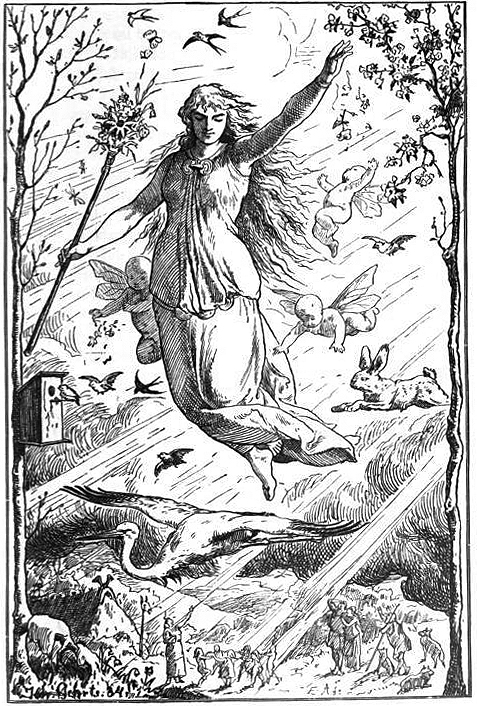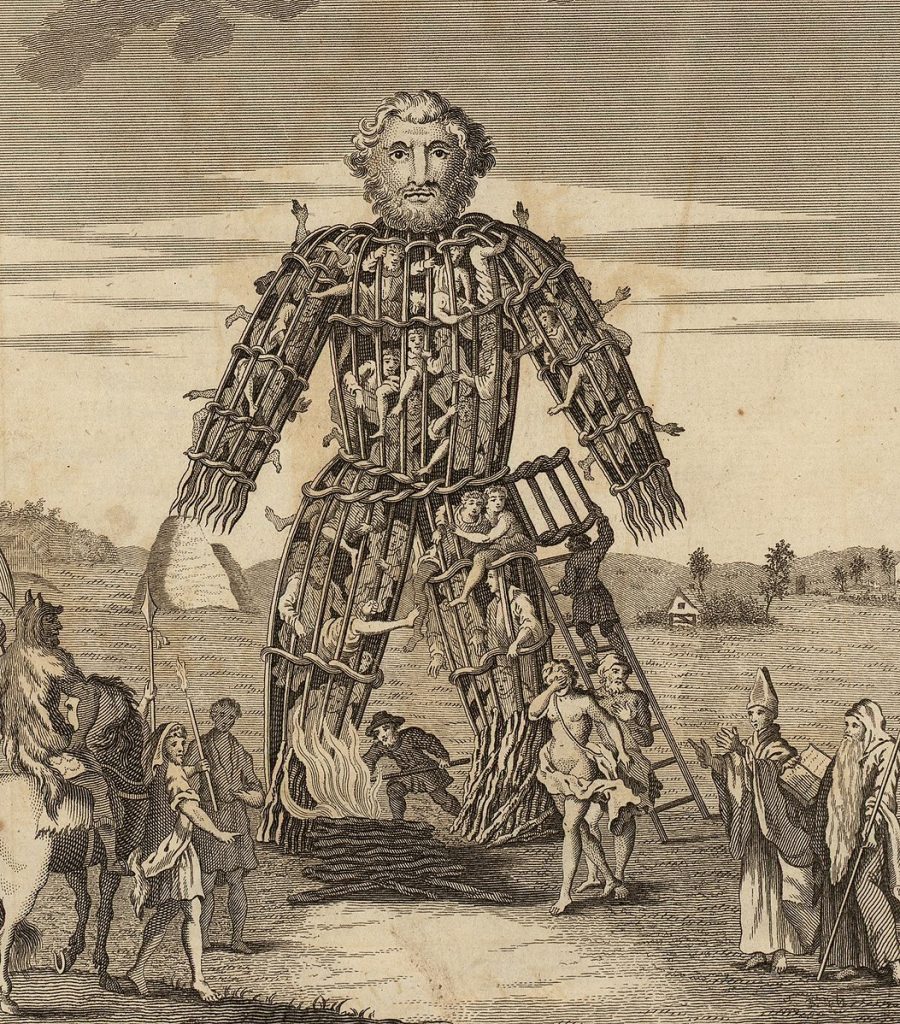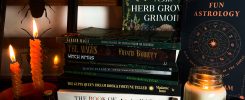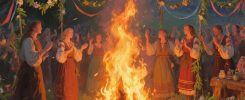Long before the Christian celebration of Easter became such a widely observed marker for the beginning of Spring, the season was honoured by festivals tied to the fertility of the Earth and the rebirth and renewal that followed Winter.
Ostara, the Spring Equinox, observed on or around 20th March, is a turning point in the year. It’s the moment of equilibrium between day and night, a sign the days are lengthening and a promise of abundance. For millennia, the Sabbat has stood as a recognition of the fragile balance between life and death.
How did these ancient celebrations of Spring become intertwined with Christian teachings and theology?
The early church knew that to convert the masses to Christianity, the transition would need to be as smooth and accessible as possible. Life at the time revolved entirely around nature, with humanity’s survival depending solely on the rhythms of the natural world. The church incorporated traditional celebrations of nature into Christian theology and practice, using the same Springtime rituals honouring gods of fertility to celebrate Christ and adopting the sacred symbols of these deities as symbols of the gospel. By preserving the essence of the traditions it sought to replace, the church was ensuring the survival of Christianity.
The timing of Easter in the Christian calendar was of utmost importance. With no fixed date, the celebrations of Good Friday, Easter Sunday, and Easter Monday take place after the first Full Moon following the Spring Equinox. This alignment of the Christian calendar to celestial events mirrored the existing patterns of life, stepping in time with lunar and solar rhythms, making the religion more accessible.
Fertility goddesses were placed in a new religious framework
Traditional Spring symbols, rituals, and rites were also adopted by the church and placed into a new religious framework.
Easter is widely thought to be named for the Germanic goddess of fertility, Eostre, who was honoured at the Spring Equinox. Her sacred symbols of hares and eggs represent dawn and new life. In preparation for her festival and on the day of Ostara, fires were lit in her honour in the hopes of receiving her blessing for a fruitful harvest.
Johannes Gehrts, Ēostre, 1888
The Norse goddess of fertility, Freyja, was similarly honoured at this time of year, as were the Roman deities Cybele, the Great Mother, and Ceres, the goddess of agriculture and grain.
These goddesses were already associated with the return of light and life following Winter, and their symbols of fertility resonated with the Christian story of resurrection. By placing Christ’s victory over death in the context of Spring awakening, the church offered a seamless transition into Christian doctrine. Celebrations of the natural cycles of life, death, and rebirth became the theological teachings of the sacrifice and resurrection of Jesus.
Religious Imagery Adopted from Pagan Symbols
Extending beyond theology into practice, the egg and the hare, once synonymous with fertility and the goddess Eostre, were adopted by the church as symbols of Easter.
The Easter Bunny
The hare is a sacred emblem of fertility and rebirth. Known to be Eostre’s companion, the animal is mysterious and wild, and in Celtic mythology they’re believed to carry messages from the Underworld. Their March mating rituals led them to be closely linked to celebrations of Spring, as well as influencing the phrase ‘mad as a March hare’.
Not only are they nocturnal, but hares also have a gestation period of 28 days, aligning them with the lunar cycles that govern our tides and seasons. They are a representation of Moon magic, and Eostre herself was believed to transform into a hare at the Full Moon.
Rather than attempt to erase the hare’s symbolism, the church transformed and evolved the animal into a symbol of innocence, becoming synonymous with the Easter Bunny over time.
The Easter Egg
The egg has stood as a symbol of the promise of life, fertility, and rebirth across the Universe for millennia.
In Egyptian mythology, the Sun god Ra emerged from a golden egg, making it the origin of all things. Similar beliefs can be found worldwide. The Persian Spring festival of Nowruz featured the exchange of decorated eggs as a symbol of life and the start of Spring at the heart of its celebrations. In Roman mythology, the egg was tied to the goddess Cybele, associated with motherhood, fertility, and nature. Her festivals often featured eggs as sacred objects.
The early church, drawing on these associations, adopted the egg as a symbol of Christ’s resurrection. Just as new life emerges from eggs, so did Christ emerge from the tomb, bringing the promise of salvation to his followers.
The practice of decorating eggs, now synonymous with Easter, also dates back to pre-Christian times. Elaborately dyed eggs were used to honour the fertility goddesses to ensure the health of crops and livestock. Christians adopted this practise. Although Lent and fasting prohibited the consumption of eggs, they would be preserved and decorated ready to be presented at Easter feasts.
The Cross
Jesus’ sacrifice on the cross bears many similarities to the Celtic tradition of burning the wicker man. Traditionally observed on Beltane (or May Day, taking place on the 1st May), a sacrifice was made by burning animals and humans inside a giant wicker statue. Not only were the sacrifices made in the hopes of harvest blessings, but the ash from this symbol of the cyclical nature of life and death was believed to help crops grow.
The Christian story of Christ’s crucifixion and resurrection mirrors these themes of sacrificial death and renewal. Just as the wicker man’s offerings were meant to bring new life to the community, Christ’s sacrifice is an act of salvation, bringing spiritual renewal to all humanity. The cross, like the wicker man, became a symbol of death transformed into renewal, a symbol of suffering turned into redemption.
Although the Christian celebration of Easter isn’t a direct derivative of a Pagan festival, many of its traditions and symbols were absorbed from ancient Pagan customs. From the calendrical placement of Easter, closely tied to the Spring Equinox and governed by lunar cycles, to familiar symbols of eggs, hares, and themes of rebirth, Easter incorporates Christian theology with age-old celebrations of fertility, renewal, and the reawakening of the natural world following Winter.
If you want to learn more about the Spring Equinox and traditional ways of celebrating, both ancient and modern, then we recommend this article on our Substack: Wyrd Books Celebrations for the Spring Equinox
